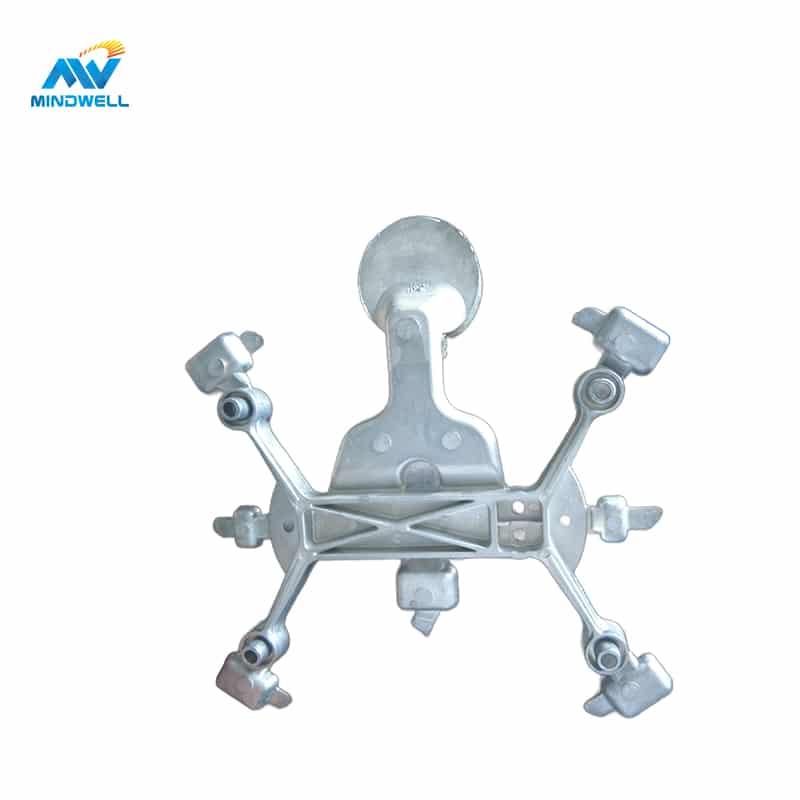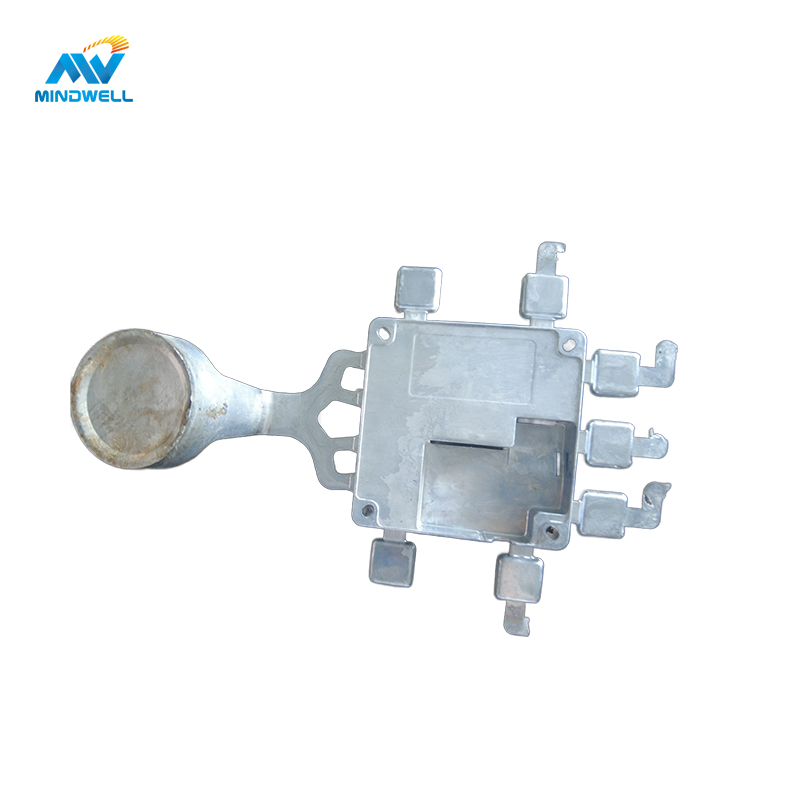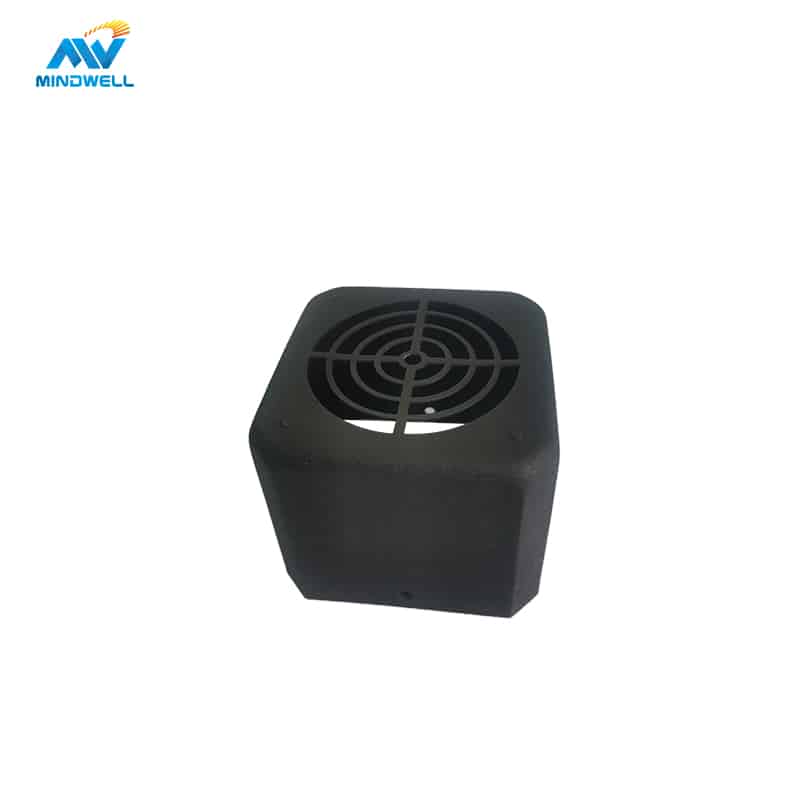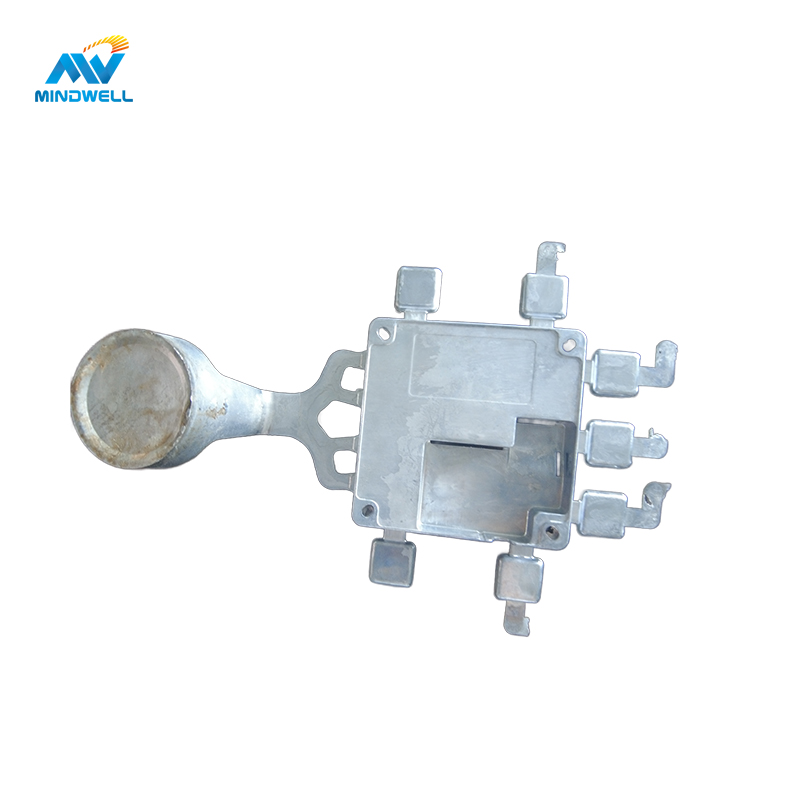Automotive aluminum heat sink die casting is a very common processing technology in automotive manufacturing, and has an important role in the manufacture of automotive parts. Automotive heat sink is the main machine parts in the automotive cooling system, is a pressure casting parts, is the use of die casting machine installed casting mold, will be heated to liquid aluminum alloy poured into the die casting machine inlet, die casting machine die casting, manufacturing mold restrictions on the shape and size requirements of the aluminum alloy automotive parts.
The role of automotive aluminum heat sink is to absorb and distribute the heat energy generated by the car engine. Aluminum heat sink has good thermal conductivity, can effectively transfer the engine heat to the outside world, to maintain the normal operation of the engine. Aluminum alloy material has excellent thermal conductivity, small specific gravity and processability. Automotive aluminum die casting heat sink is widely used in automobile manufacturing, internal combustion engine production, motorcycle manufacturing, motor manufacturing, oil pump manufacturing, transmission machinery manufacturing and other automotive components.
Working Principle
The working principle of automobile heat sink is mainly through the flow of coolant in the radiator core, the heat generated by the engine will be transferred to the heat sink, and then the heat will be emitted to the air through the heat sink to ensure the normal operation of the engine. Specifically, the heat sink is usually made of thin sheets of aluminum or metal arranged into tiny grooves. When the coolant flows through the heat sink, it has a large area of contact with the heat sink, allowing the heat to be radiated into the air. In this process, the hot coolant becomes cooler as it dissipates heat to the air, and the cold air warms up as it absorbs the heat dissipated by the coolant.
Additionally, heatsinks can emit heat into the air by either natural convection or forced convection. Natural convection refers to the flow of air through the radiator core in its natural state, while forced convection refers to the flow of air through the radiator core by means of a fan or other forced means.
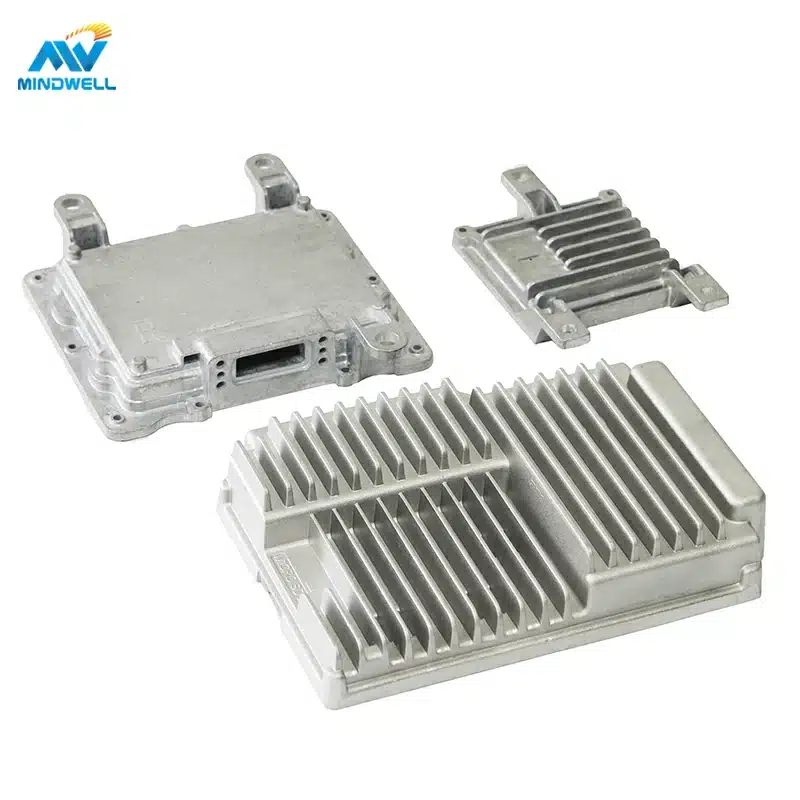
Automotive aluminum heat sink die casting process
- Melting aluminum
- Die casting molding
- Cooling
- 表面処理
- Performance testing
In our company, the specific die-casting process steps according to different designs, different needs can be corresponding changes, the heat sink for various performance testing, such as thermal conductivity, mechanical properties, etc., to ensure that it meets the design requirements.
Automotive aluminum heat sink material selection
- Good thermal conductivity: as a heat sink, its basic function is to quickly transfer the engine heat to the outside world, so it needs to have excellent thermal conductivity.
- High-temperature strength: able to maintain good strength and stability at high temperatures to ensure that no deformation or damage occurs during the work of the automobile engine.
- Corrosion resistance: able to resist the vibration, high temperature and corrosive substances generated in the process of automobile operation, to ensure the durability and reliability of the heat sink.
- Processability: easy to die-casting, machining and surface treatment and other manufacturing processes to facilitate mass production.
At present, the main materials used in automotive aluminum heat sinks include aluminum alloy and stainless steel. Among them, aluminum alloy has better thermal conductivity and processability, and is a commonly used heat sink material. Stainless steel has good high-temperature strength and corrosion resistance, in some special circumstances can replace aluminum alloy as a heat sink material.
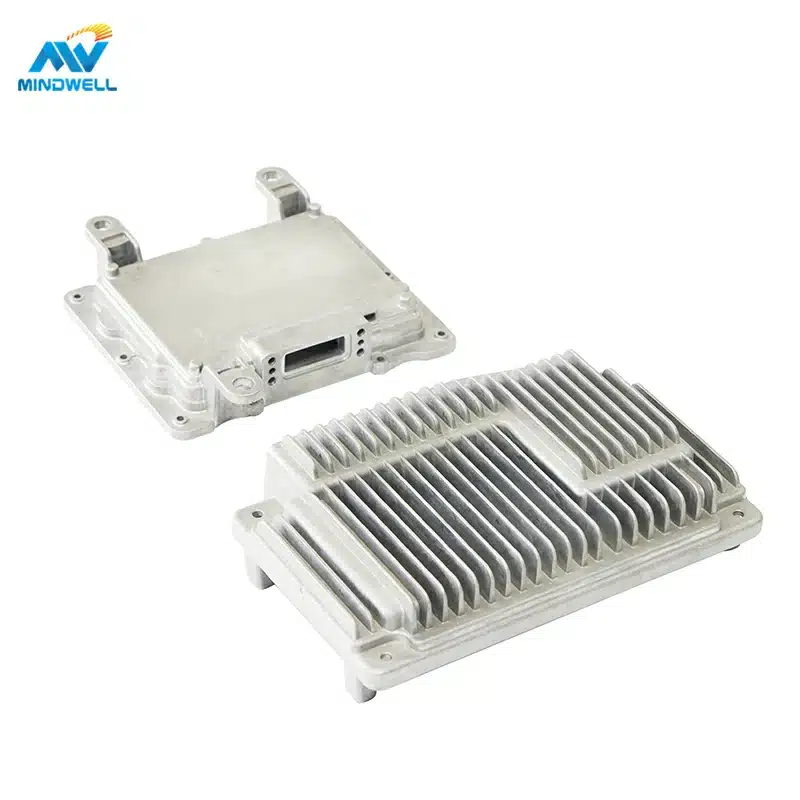
The main structure of automotive aluminum die-casting heat sinks
- Heat sink fins
- Heat sink cover
- Bottom of heat sink
- Heat sink shell
- Heat sink water pipe
These different heat sink structures can be customized according to the needs of the use, different structures can make the automotive aluminum die casting heat sink can effectively transfer the engine heat to the outside world, to maintain the normal operation of the engine.
How to choose a car heat sink?
- Look at the material: the material of the automotive heat sink mainly uses aluminum alloy material. Aluminum alloy has excellent thermal conductivity, and more lightweight, can effectively reduce the weight of the car, improve fuel economy.
- Heat dissipation efficiency: The heat dissipation efficiency of the heat sink depends on the thermal conductivity of its material, heat dissipation area, fin height, number of fins and other factors. When choosing a heat sink, the heat sink with higher thermal efficiency should be selected according to the specific conditions and performance requirements of the vehicle.
- Reliability: the reliability of the heat sink depends on the high temperature resistance of its materials, corrosion resistance, mechanical strength and other factors.
- Cost: the cost of different materials and different processes of the heat sink is different, according to the specific circumstances of the vehicle and performance requirements, choose the most cost-effective heat sink.
- Applicability: When choosing a heatsink, you also need to consider its applicability. For example, for high-performance sports or racing cars, often prefer to use efficient aluminum radiator to ensure stable operation of the engine under high load conditions. For economical vehicles, plastic or composite radiators are often chosen in order to reduce costs and vehicle weight.
In summary, when choosing a car radiator, you need to consider factors such as material, cooling efficiency, reliability, cost and applicability. When choosing, you should combine the specific situation and requirements for comprehensive consideration, and choose the most suitable for your vehicle’s heat sink.
Automotive aluminum heat sink performance test
In order to ensure the quality and reliability of automotive aluminum heatsink, it is necessary to carry out a number of performance tests, mainly including the following aspects:
- Thermal conductivity test: test the thermal conductivity and thermal resistance of the aluminum heat sink to assess its heat transfer effect.
- Mechanical performance test: test the tensile strength, yield strength, elongation and other mechanical properties of the aluminum heat sink to determine its high-temperature strength and stability.
- Corrosion resistance test: simulate the corrosive environment in the process of automobile operation, and conduct corrosion resistance test on aluminum heat sink to verify its corrosion resistance in the process of long-term use.
- Simulation test: the use of computer simulation technology, the actual use of aluminum heat sink simulation analysis, in order to predict its performance in the product development stage.
Future Development Trends
With the continuous development of science and technology, automotive aluminum heat sink manufacturing will continue to progress. The following are some future development trends:
Material innovation: research on new aluminum alloys and composite materials to improve the thermal conductivity of aluminum heat sinks, high-temperature strength and corrosion resistance.
Manufacturing process optimization: using more advanced die-casting technology, surface treatment methods and production automation to improve production efficiency and quality stability.
Intelligent heat dissipation system: Combine advanced sensors and control systems to develop an intelligent heat dissipation system to better meet the heat dissipation needs of automobiles under different working conditions.
Environmental protection and sustainable development: focusing on environmental protection and sustainable development, adopting green production methods to reduce waste emissions in the production process, as well as researching recycling and reuse technologies for aluminum heat sinks.
結論
In conclusion, the automotive heat sink plays a role in the transfer of heat, for the safety of the car, the service life is very important, aluminum die casting is the most suitable for the production of automotive heat sink process, according to the use of the parts of the choice of different heat sinks. In our company, we have a wealth of experience in the production of heat sinks, if you have customized design needs, please feel free to communicate with our engineers.


